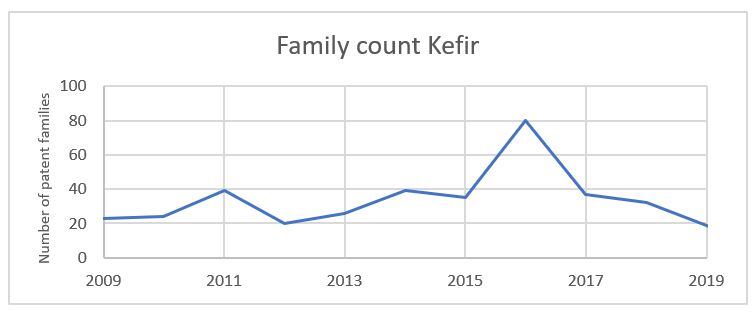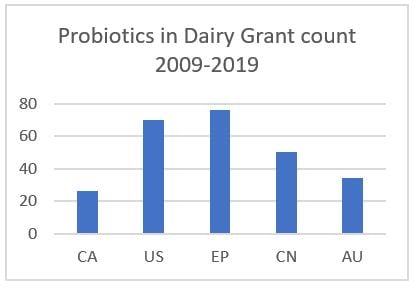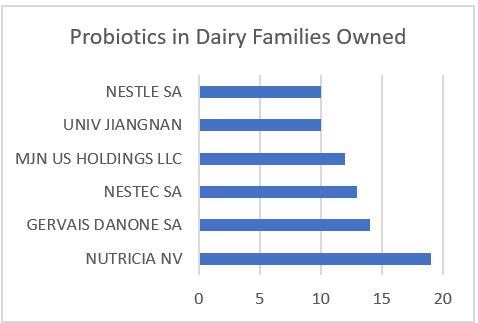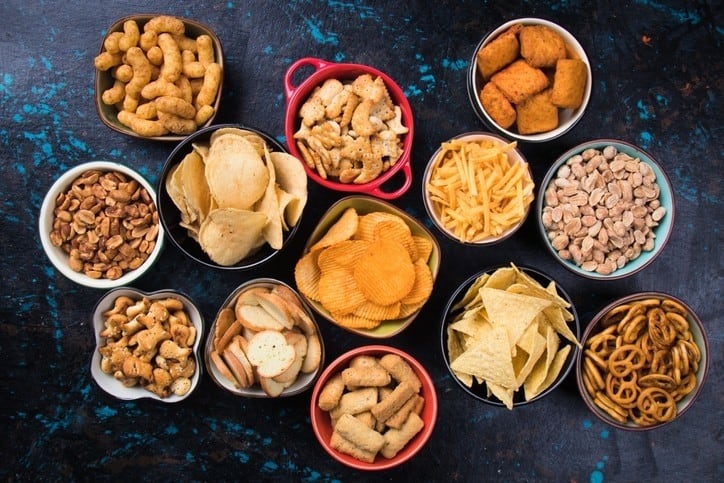George James and Monika Rai, who work at intellectual property law firm EIP, recently conducted a study looking at microbial trends in the food and drink landscape. Using EIP’s search and analytics tool, Patently, they examined patent filings placed between 2009 and 2019.
“The microbes present in our digestive system, forming the gut microbiome, have been increasingly prioritised in food and drink products over the last 20 years,” the IP experts concluded.
This reflects growing awareness of the importance of digestive health on overall wellness. Over the last decade, efforts such as the Human Microbiome Project have highlighted the ‘enormous diversity’ of beneficial microbes that live in our bodies – and microbiome innovation is now of ‘enormous interest’ to the nutrition, agriculture, health and personal care sectors.
“Such products, which have a functional effect on the health of the digestive tract, have been popular with consumers and are now common on supermarket shelves,” James and Rai noted. “The nutrition sector, driven by consumer demand, is recognising the value in developing and marketing products that are beneficial to the gut microbiome. These products include those containing specific beneficial microbes, known as probiotics, and those that contain ingredients, known as prebiotics, that promote the growth and maintenance of healthy gut microbes.”
Cool kefir and fashionable fermentation
Microbes have been used in baking, brewing and cheesemaking for generations. But more recently, products such as kefir – a product made from fermented goat milk - have seen a surge in popularity as consumers become more conscious of the benefits of maintaining a healthy microbiome.
“Its popularity has been reflected by patent filing trends, where the number of patent families worldwide containing the word 'kefir' boomed in 2016; a patent family being a group of related patents,” explained James and Rai.

Fermentation continues to be a hot topic, with manufacturers increasingly leveraging bacteria or yeasts to convert carbohydrates to alcohol or organic acids. This can enhance the taste, texture or aroma of foods. It can also improve shelf-life by inhibiting the growth of unwanted microbes.
“These qualities, in addition to process speed and yield, are of utmost importance to food manufacturers, who in turn often rely on patents to protect their inventions relating to these aspects. For example, one applicant has been able to successfully gain protection in Europe for a composition used during fermentation that comprises specific lactic acid bacteria, which is said to inhibit the growth of pathogenic microorganisms in food products for longer periods of time. Other such inventions include Lactobacillus fermentum strains that increase the pH of a fermented milk product such as yoghurt, to prevent post-acidification which leads to spoilage and methods for decreasing the lag time in a fermentation of a culture.”
But patent filings for products that have a positive impact on the gut microbiome appear to have attracted the most attention.
Probiotics: Dairy dominates
Globally, EIP data revealed, there has been a jump in the number of patent filings related to pro- and prebiotics over the past five years.
Interestingly, the researchers highlight, patent offices including the European Patent Office haven’t seen an increase in filing activity. Rather, the global jump has been fuelled by an acceleration in China. This, James and Rai believe, could suggest China is coming to the ‘forefront’ of research in the field.
To dig a little deeper, the IP experts focused their research on common food categories containing beneficial probiotics, concentrating on dairy, cereals and mueslis.
“Our data certainly suggests that, for the period 2009-2019, dairy was the most established probiotic-related food category,” James and Rai told FoodNavigator.

“From 2009-2019, we identified over 70 European patents specifically directed towards dairy products containing living probiotic bacteria that have an effect on the digestive tract, which protect compositions, bacterial strains and uses thereof in treating disorders and maintaining a healthy gut. This includes, for example, Danone’s patent for a fermented dairy product comprising a Streptococcus thermophilus strain, for increasing or maintaining a Faecalibacterium prausnitzii population, the most abundant bacterium in the intestine of a healthy adult, which plays a vital role in the gut microbiota. A further example is Nestlé’s patent for myo-inositol and a combination of probiotics for use in the prevention of excess body weight in infants.”
Nevertheless, they insisted, there is plenty of opportunity in dry food categories like cereals.
“Probiotics are now frequently found in dried foods such as cereal and muesli, and a variety of such products is available on supermarket shelves. Our data showed that, despite growing demand, there were very few patents specifically directed towards probiotics in cereal and muesli between 2009-2019,” we were told.
“That said, although the number of patents found with classifications for both probiotics and dried foods was low, this does not mean that probiotic inventions that are capable of being used in such products are not protected by patents. For example, a probiotic may be claimed in a patent and be suitably used in a wide variety of food types. The patent itself may not even refer to cereals specifically, for example. If this were the case, the patent would not necessarily be given a specific food category classification and therefore may not appear in a targeted search. This applies equally to other specific food classifications. For example, one application identified in our search relates to a new bacterium, used as a prophylactic to prevent Listeria infections, in food products ranging from cereal to yoghurt.”
Gut health is big business
The majority of IP applications in the study period were made by large multinational organisations, which leverage patents to protect their intellectual property rights and commercial interests.
“Some of the most active companies in this space for that period were French multinational Danone, along with its subsidiary Nutricia, as well as Mead Johnson Nutrition, Nestlé, and Nestec, a company with strong ties to Nestlé. Each of these companies held a significant number of patent families both globally and in Europe specifically,” Rai and James noted.
“It is perhaps unsurprising that Danone holds one of the highest numbers of dairy and probiotic related patent families for a single entity, considering the popularity of its probiotic products, including Actimel and Activia. The patenting activity of large companies in this field, including Danone, Nestlé and MJN highlights the value that such companies assign to IP rights for new advances.”

However, James and Rai still see space for smaller businesses and challenger brands in the gut health space.
“Although the importance of probiotic products has not escaped some of the world’s largest nutrition companies, which appear to be dominating this field, this does not mean that smaller companies cannot achieve success,” they told us.
From 2009-2019, the European Patent Office received over 500 patent application directed towards foods containing beneficial probiotics. Of these, Danone, Nutricia, MJN, Nestlé and Nestec were the original family applicant on only roughly 40%. Several other businesses, small, medium and large, were responsible for around 60% of filings in the field at the EPO.
“Patents can be extremely useful assets to smaller companies looking to improve their position, by providing a competitive advantage and attracting potential investors. Furthermore, a strong patent portfolio is a valuable asset that larger companies may seek to acquire,” the IP experts suggested.




